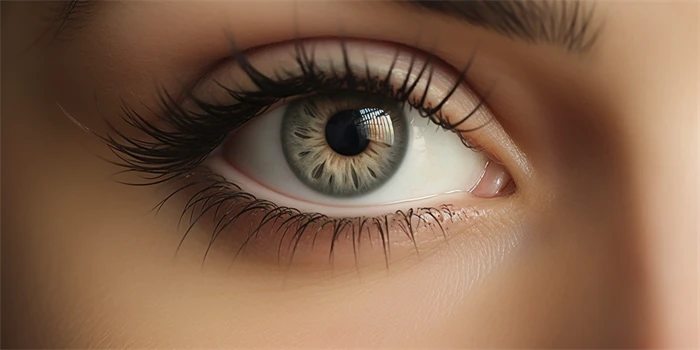Asian eye plastic surgery, also known as Asian double eyelid surgery or Asian blepharoplasty, is a popular procedure among individuals of Asian descent who desire to enhance the appearance of their eyes. This surgical technique aims to create a double eyelid fold or alter the existing crease to achieve a more open and defined look.

Understanding Asian Eye Anatomy
Before delving into the different procedures available, it's crucial to understand the unique characteristics of Asian eyes. Asian individuals often have a single eyelid fold or an indistinct crease, resulting in a monolid appearance. The goal of Asian eye plastic surgery is to create or enhance the eyelid crease to improve facial harmony.
Types of Asian Eye Plastic Surgery
1. Double Eyelid Surgery: This procedure creates a distinct fold or crease above the eyelid, resulting in a more defined upper eyelid. 2. Epicanthoplasty: Epicanthoplasty aims to elongate the inner corner of the eye, minimizing the epicanthal fold often present in Asian eyes. 3. Upper Eyelid Blepharoplasty: This surgery involves removing excess skin and fat from the upper eyelid area to improve drooping or sagging. 4. Lower Eyelid Surgery: Lower eyelid surgery addresses issues such as under-eye bags or puffiness by removing or repositioning fat deposits. 5. Canthoplasty: Canthoplasty focuses on reshaping the outer corner of the eye, creating a more lifted and refreshed appearance.
Considerations before Asian Eye Plastic Surgery
1. Consultation with a Qualified Surgeon:
It is vital to choose a board-certified plastic surgeon experienced in Asian eye plastic surgery. Schedule consultations with multiple surgeons to discuss your goals and ensure you choose the right procedure for you.
2. Realistic Expectations:
Understand the limitations of Asian eye plastic surgery and have realistic expectations regarding the outcome. Discuss your desires with the surgeon, who can assess which procedure aligns best with your goals.
3. Healing and Recovery:
Prepare for the recovery process by ensuring you have enough time to rest and heal after surgery. Follow your surgeon's instructions regarding post-operative care, including proper wound care and avoiding strenuous activities.
4. Potential Risks and Complications:
Like any surgical procedure, Asian eye plastic surgery carries risks. Educate yourself on the potential complications, such as infection, scarring, or asymmetry, and discuss them with your surgeon.
5. Cost and Financing:
Research the cost of the procedure and explore financing options. It's important to consider both the financial aspect and the quality of care provided when choosing a surgeon.
Asian Eye Plastic Surgery: Patient Perspectives
Many individuals considering Asian eye plastic surgery seek personal stories and experiences to gain insight into what the process entails. Here are a couple of patient perspectives:
Emily's Story:
For years, Emily felt unhappy with the appearance of her monolid eyes. She decided to undergo Asian double eyelid surgery to create a crease and achieve a more awake and refreshed look. Emily was thrilled with the results, stating that the procedure enhanced her self-confidence.
James' Experience:
James opted for epicanthoplasty to elongate the inner corners of his eyes, as this feature was causing him to feel self-conscious. After the surgery, James noticed a significant improvement, and his eyes appeared more balanced and symmetrical, enhancing his overall facial harmony.
Frequently Asked Questions (FAQ)
1. Will Asian eye plastic surgery erase my ethnic features?
No, the goal of this procedure is to enhance your natural features and achieve greater facial harmony while respecting your ethnic background.
2. How long will the results of Asian eye plastic surgery last?
The results of Asian eye plastic surgery are typically permanent. However, natural aging processes can still impact the appearance of your eyes over time.
3. Are the risks of Asian eye plastic surgery higher for people of Asian descent?
No, the risks associated with Asian eye plastic surgery are similar to those of other cosmetic procedures. It is important to choose a qualified surgeon to minimize potential complications.
4. Can I wear contact lenses after Asian eye plastic surgery?
In most cases, you can wear contact lenses after the initial healing period. However, it's important to follow your surgeon's instructions to ensure proper eye care during the recovery process.
5. How much does Asian eye plastic surgery cost?
The cost of Asian eye plastic surgery varies depending on several factors, such as the specific procedure, the surgeon's experience, and the geographical location. It is best to consult with a surgeon for an accurate cost estimate.
Asian eye plastic surgery offers individuals of Asian descent an opportunity to enhance their natural features and attain their desired look. Consulting with a qualified surgeon, understanding the different procedures available, and managing expectations are crucial steps in making an informed decision. By addressing reader's needs and providing actionable advice, this article aims to empower readers on their journey towards choosing the right procedure for them.
References:
1. American Society of Plastic Surgeons, "Asian Double Eyelid Surgery: What You Should Know." 2. Asian Eyelid Surgery Center, "Asian Eyelid Surgery: The Basics."



